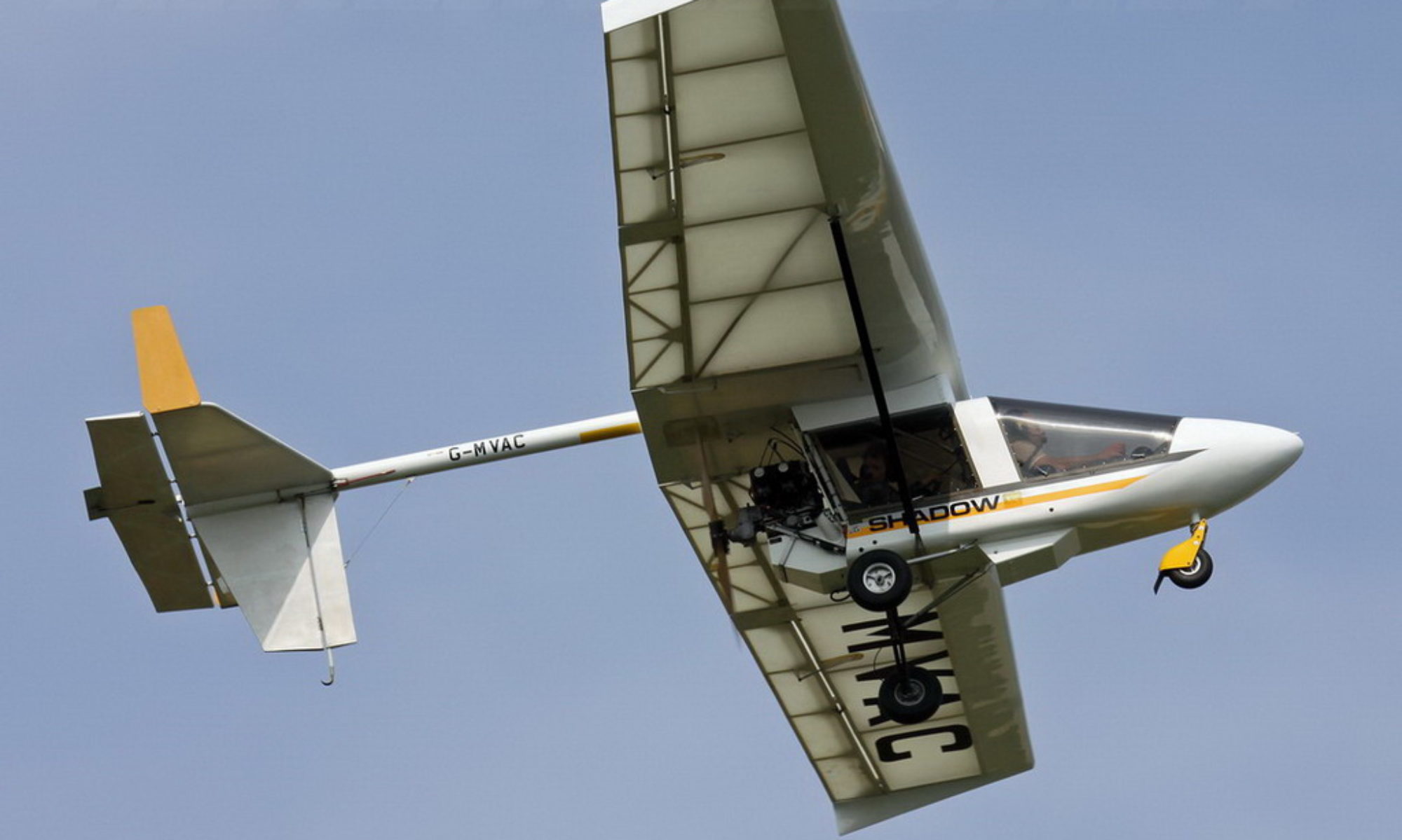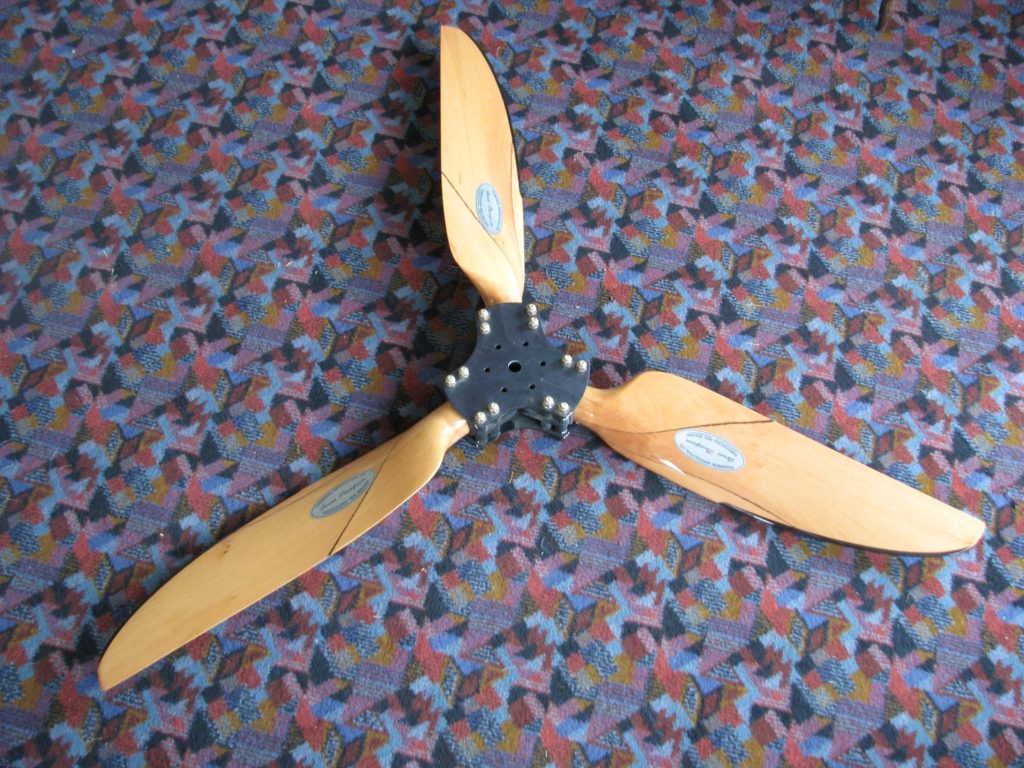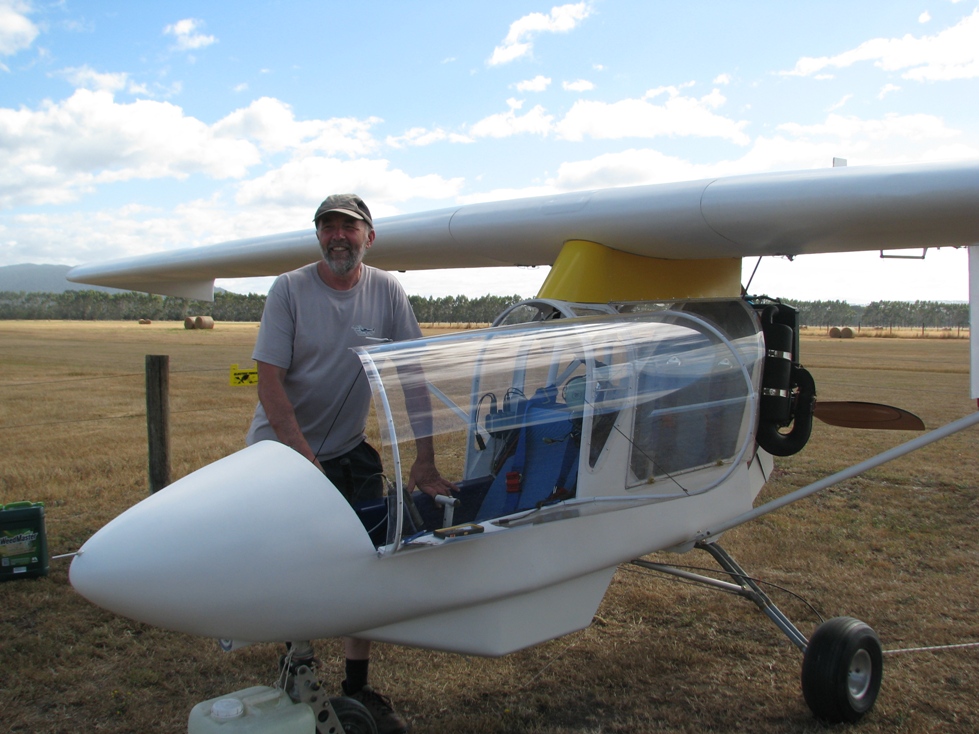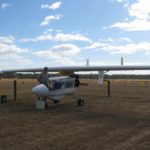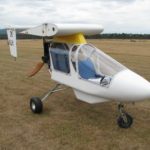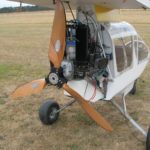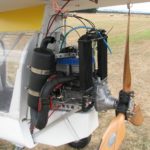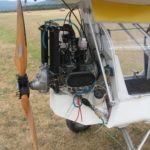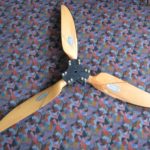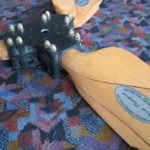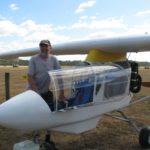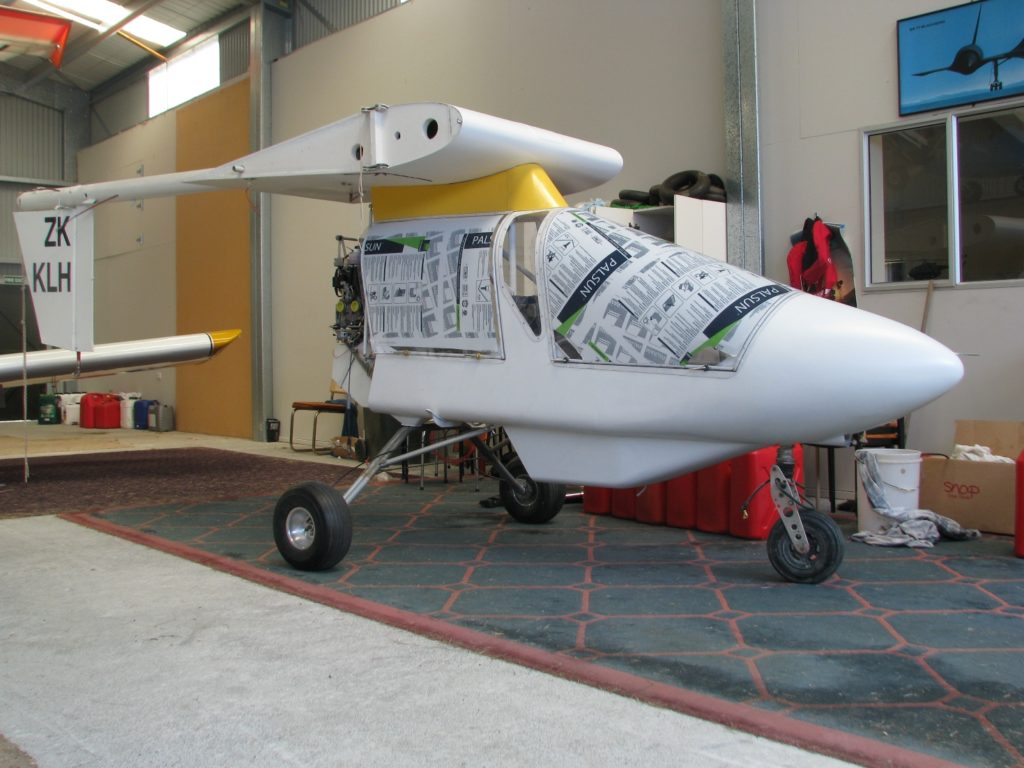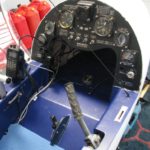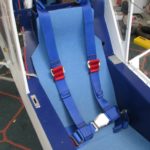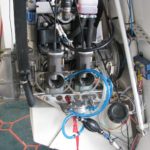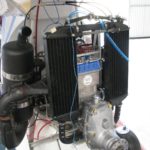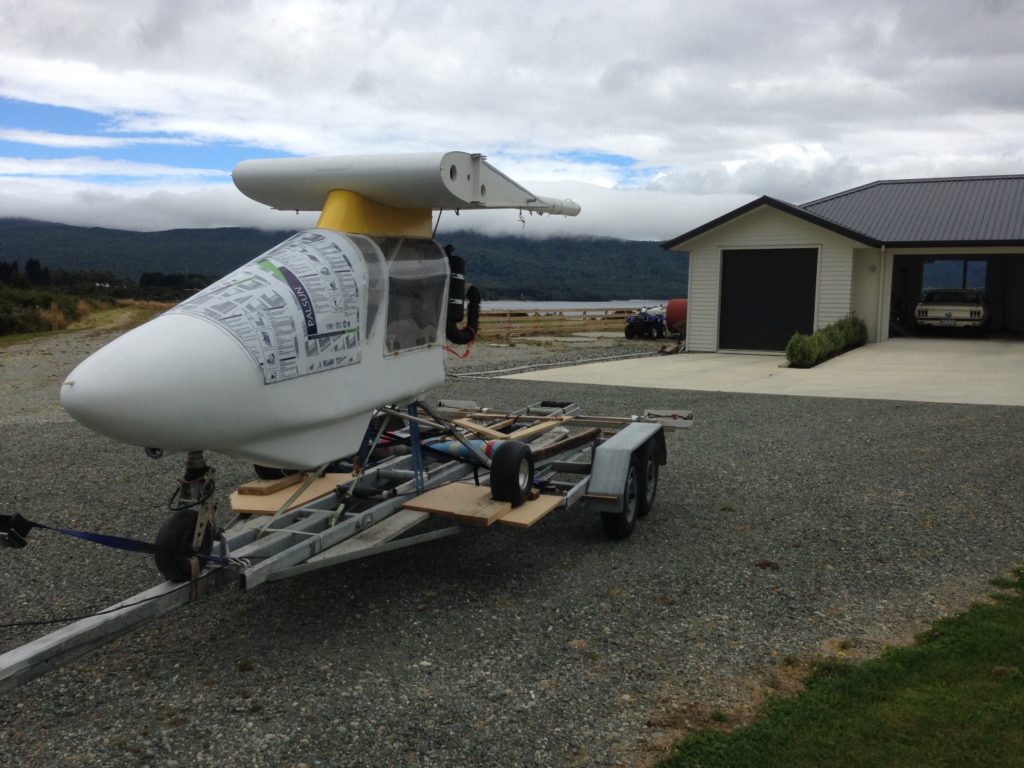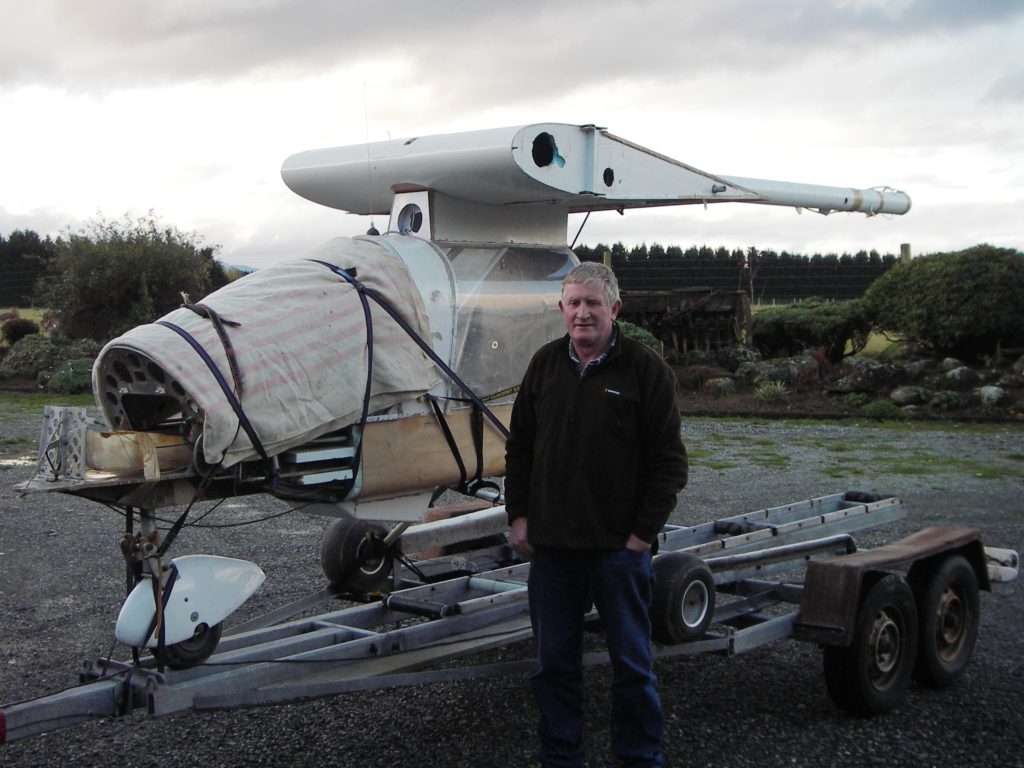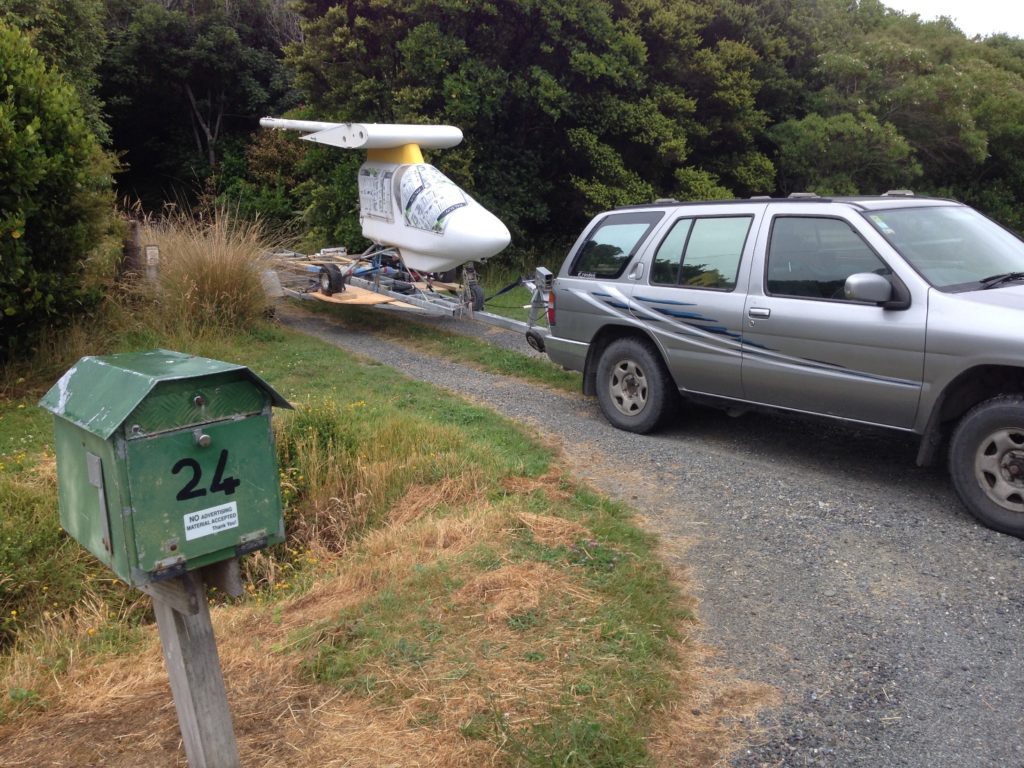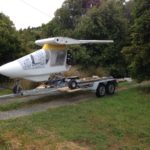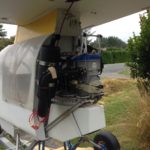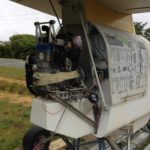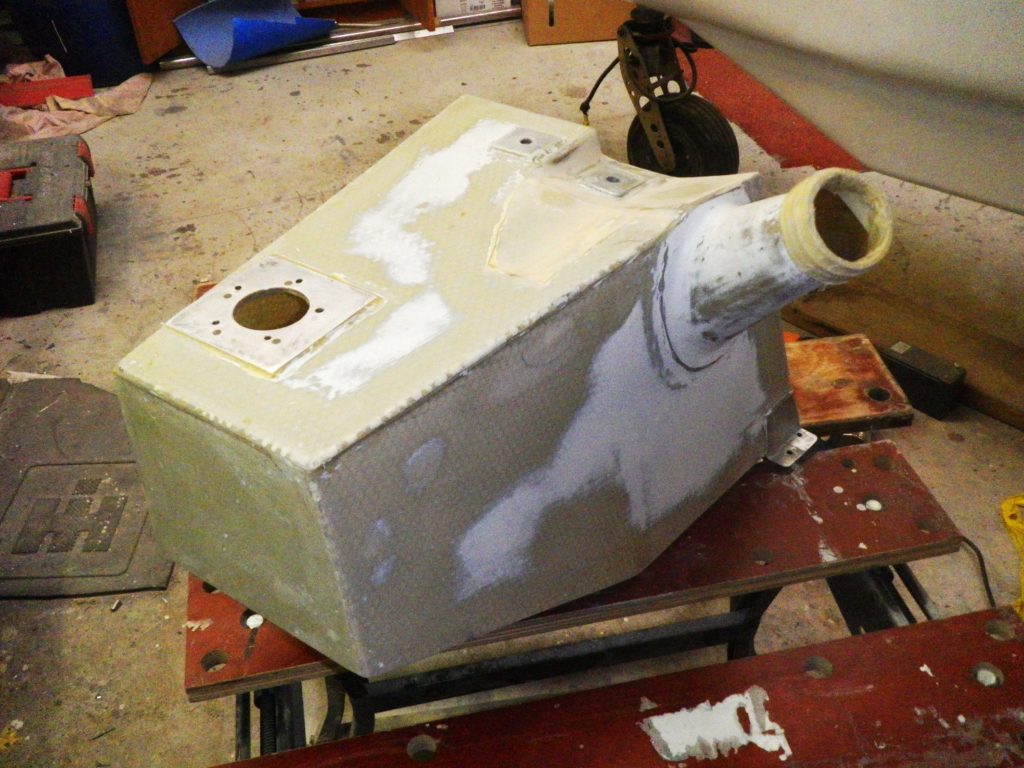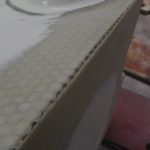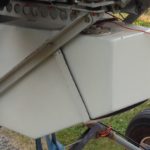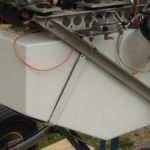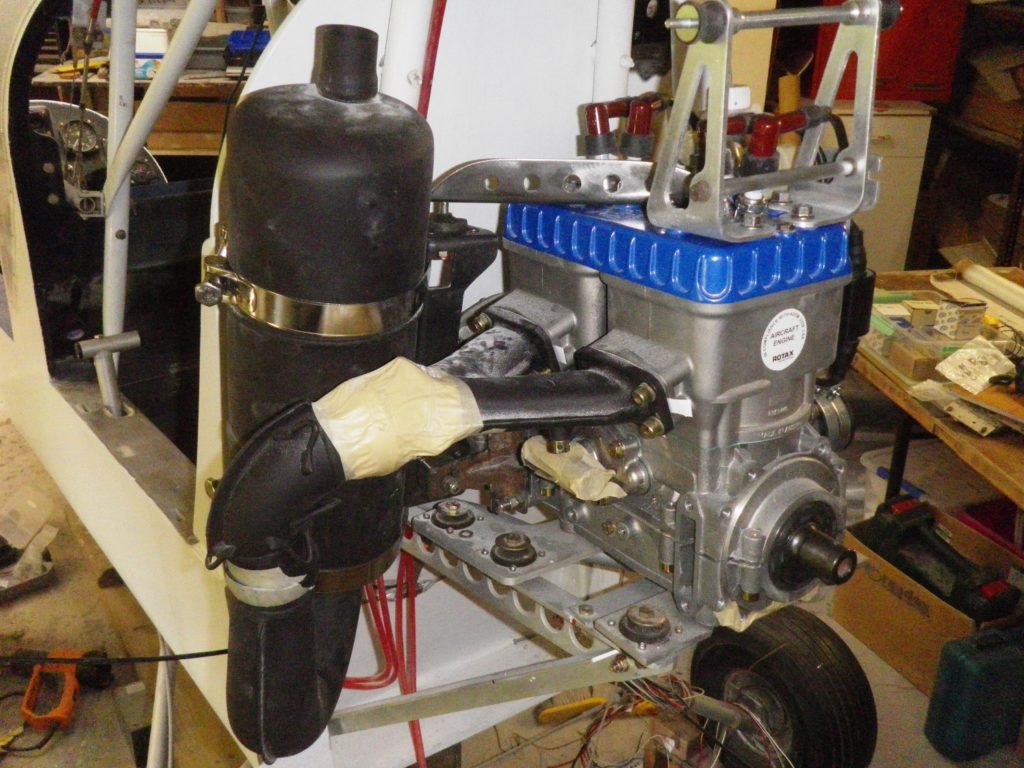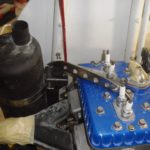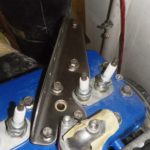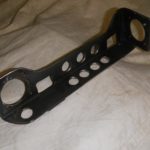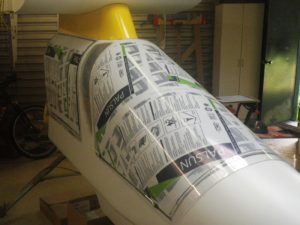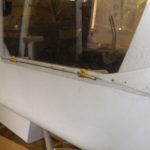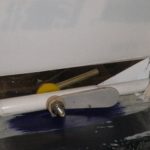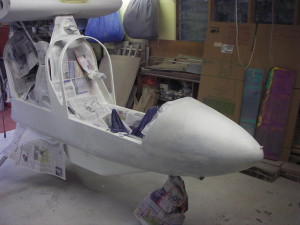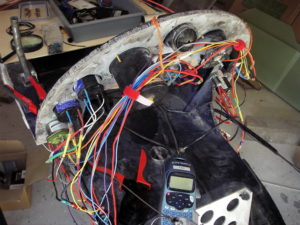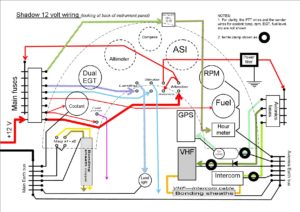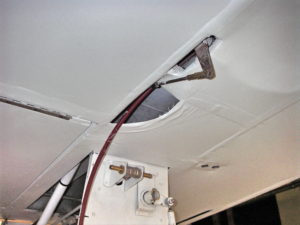At last, everything is bolted, screwed, glued or wired onto the Shadow microlight. Oil and fuel are in their respective tanks.
Right, no more procrastinating. Just get on with the engine start. OK, roll the Shadow outside. Malcolm and George appear like magic and offer encouragement. Tie the aircraft to a couple of fence posts.
Bit of mild panic, while the ignition key is searched for! Subconsciously delay a bit longer, by checking a few more bits and pieces. OK, let’s do it.
After a few pulls, the Rotax 582 fires up easily. A huge relief after all the effort to get to this stage.
Over the next few minutes, we check things over.
- tacho is reading 5000rpm at fast idle.*
- handheld Icom A24 VHF radio works well
- ancient Comtronics intercom has ‘packed a sad’
- fuel and coolant temp gauges function
- no response from EGT gauge **
- plunger primer on the dash leaks fuel *^*
Then it’s switch off, push back and go home. It’s been a long hot 4 days.
*Next day my tacho reads only 1000rpm at idle, so it’s clearly a dodgy unit. We temporarily solve the problem by swapping it with the tacho from Murray’s 582 Thruster.
** Reversing polarity of EGT sender wires solves this issue.
*** Tossed out the plunger primer. Too scary to have fuel dripping out!
